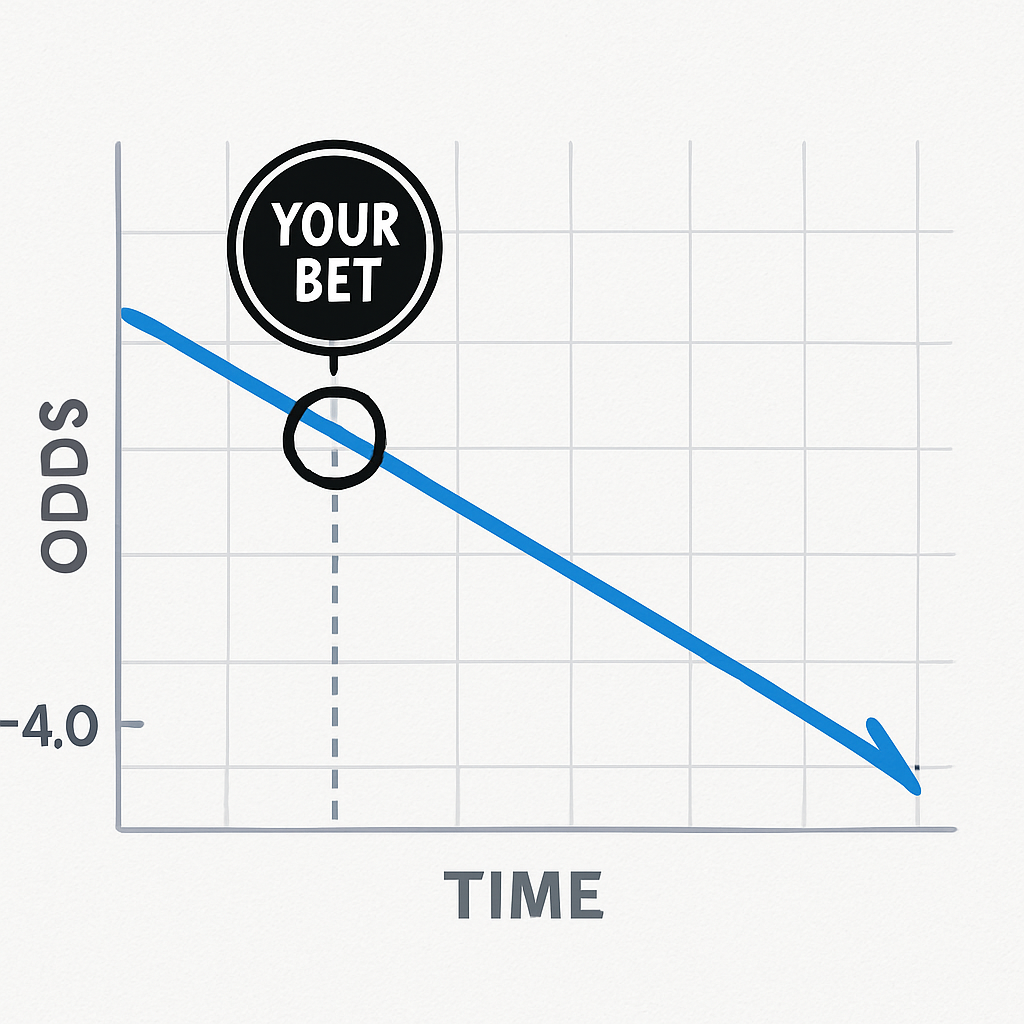
When people talk about sports betting, they often focus on winners and losers. Did you cash the ticket or not? That’s the most obvious measure of success, but it’s not the best one. The real test of whether someone is a skilled bettor lies in something less flashy but much more telling: Closing Line Value (CLV), a concept frequently highlighted by platforms like FunBet Italia where disciplined betting strategies are emphasized.
Understanding CLV separates recreational gamblers from those who treat betting seriously. It’s the metric sharp bettors use to judge whether they’re beating the market, and over time, it’s a far stronger indicator of skill than a hot streak or a lucky run.
What is Closing Line Value?
Closing Line Value measures the difference between the odds you locked in when you placed a bet and the odds available at kickoff or tip-off—the closing line.
Example:
- You bet on a team at -2.5 on Monday.
- By game time, the same team is -4.5.
If your ticket is at -2.5, you got a much better number than the market’s final assessment. That’s positive CLV. If the line closes at -1.5, you ended up on the wrong side.
In simple terms, CLV shows whether you’re consistently getting better prices than the consensus final number. It’s not about one bet, but about whether you’re beating the market over the long run.
Why Does CLV Matter?
Sportsbooks are incredibly efficient. By the time a line closes, it reflects the best available information: injuries, weather, betting volume, and expert analysis. It’s a nearly perfect snapshot of the true odds of a game.
If you can consistently bet numbers that end up being better than the closing line, it means you’re spotting value before the market corrects itself. Over time, this is the real skill in sports betting.
Why not just measure success by wins and losses? Because short-term results are noisy. A bad beat or lucky cover can swing your record, but CLV cuts through the randomness. It tells you whether you’re consistently making bets that give you an edge, even if the outcome of a single game doesn’t go your way.
How to Calculate CLV
The simplest way to measure CLV is to track:
- The odds (or point spread) you bet.
- The closing odds.
- The difference between the two.
For spreads and totals, you’re looking at whether your number is better than the closing number. For moneylines, you can convert odds into implied probabilities and compare the two.
Example with moneyline:
- You take a team at +150 (40% implied chance).
- They close at +120 (45.5% implied chance).
Your bet had more value because you got paid on +150 instead of +120 for the same true odds. That’s positive CLV.
Why CLV is the Real Test of a Good Bettor
Anyone can experience a lucky streak in the short term. Someone might pick a handful of winners without much thought. But luck fades. The only way to sustain profit in betting is by consistently finding value before the market adjusts.
CLV proves that you’re doing precisely that. If your bets regularly beat the closing number, you’re showing that you:
- Recognize soft spots in the market.
- React quickly to information.
- Trust your numbers over public perception.
In other words, you’re betting like a professional.
The Role of Volume and Sample Size
A single bet with CLV doesn’t mean much. Even ten or twenty bets aren’t enough to know whether you’re really beating the market. Like any statistical measure, CLV only becomes meaningful over a large sample size.
Professional bettors track hundreds or thousands of wagers over months and years. That’s when patterns become clear. If you’re consistently on the right side of the closing number across a significant sample, it’s strong evidence that you’re making sharp bets.
Common Misconceptions About CLV
1. CLV guarantees winning.
Not true. Beating the closing line improves your expected value, but you’ll still lose plenty of individual bets. It’s about long-term profitability, not short-term results.
2. Only big moves matter.
Even half a point in a spread can make a significant difference, especially around key numbers in football, such as 3 or 7. Small edges add up.
3. CLV is only for professionals.
Any bettor can track CLV. All it takes is writing down your bet and comparing it to the closing number. It’s one of the easiest ways to evaluate whether your approach is working.
How to Improve Your CLV
If you’re not beating the closing line yet, there are steps you can take:
- Bet early. Many of the best opportunities come right after a line opens, before the market has fully adjusted.
- Shop for lines. Having accounts at multiple sportsbooks gives you more chances to find a better number.
- Stay informed. Injuries, lineup changes, and weather reports—these move markets. Being ahead of the news helps.
- Trust your process. If your numbers say a line should be different, act before the market catches up.
CLV vs. Chasing Wins
It’s tempting to judge yourself only by your win-loss record. After all, cashing a ticket feels good. But if your goal is long-term profit, CLV is far more important. A bettor who consistently beats the closing line but has a bad run of variance is still on the right track. A bettor who wins a few lucky bets without a clear value is building on shaky ground.
Final Thoughts
Closing Line Value isn’t flashy. It doesn’t guarantee instant results. But it’s the most transparent window into whether you’re genuinely a good bettor. Over time, wins and losses even out, but CLV tells the truth about your skill.
If you want to know whether you’re improving, track your bets against the closing number. The more you beat it, the more confident you can be that you’re not just getting lucky—you’re actually ahead of the game.
